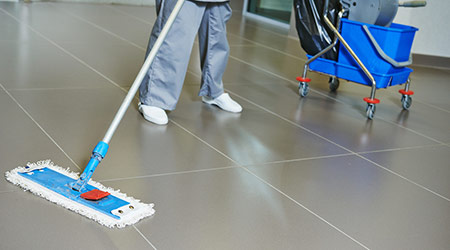Disinfectants containing quaternary ammonium chloride (also known as quats) are a popular choice in hospital environmental service departments because they are both effective and inexpensive.
However, quats are also subject to a phenomenon known as quat binding that can render them ineffective, according to an article on the CleanLink website.
“Quat binding occurs when quaternary ammonium compounds make contact with materials, such as cotton, that inactivate or impair the germ-killing performance,” said Allen Rathey, principal, Healthy Facilities Institute University, Boise, Idaho.
“What happens is, EVS staff is putting U.S. Environmental Protection Agency (EPA)-registered pesticide products and active ingredients into the environment, and it’s not killing as it’s supposed to because of the concentration decrease,” said Heidi Wilcox, microbiologist and president of Wilcox EVS, Haverhill, Massachusetts.. “So quat binding can pollute your indoor air and surfaces while not killing what you set out to kill. It’s a recipe for disaster.”

 Contaminants Under Foot: A Closer Look at Patient Room Floors
Contaminants Under Foot: A Closer Look at Patient Room Floors Power Outages Largely Driven by Extreme Weather Events
Power Outages Largely Driven by Extreme Weather Events Nemours Children's Health Opens New Moseley Foundation Institute Hospital
Nemours Children's Health Opens New Moseley Foundation Institute Hospital Code Compliance Isn't Enough for Healthcare Resilience
Code Compliance Isn't Enough for Healthcare Resilience Ribbon Cutting Marks First Phase Completion for New Montefiore Einstein Facility
Ribbon Cutting Marks First Phase Completion for New Montefiore Einstein Facility